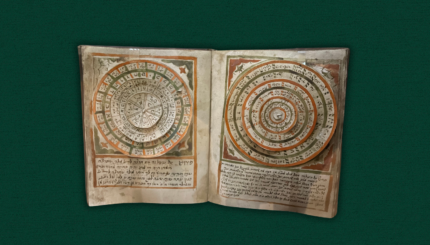The Jewish calendar is a bit interesting since we also live on Gregorian time. The fact that it is a lunar-based calendar means that every year the Hebrew dates shift vis-a-vis the “regular calendar” so that certain holidays, while they fall around that same time each year, will fall on a different date of the Gregorian calendar.
Internally, the Jewish calendar is also interesting in its composition, with its cycle of festivals and special days. While the Jewish calendar, like other calendars from other traditions, has a sequence of holidays to mark natural seasons and historical events; it also gives us the opportunity to focus our thoughts and spiritual energy on important ideas and values. Additionally, the Jewish calendar has a series of important “intervals” that link the various holidays, not just highlighting important days, but important times.
These times can be the holidays themselves—Passover, for example, is not one day but a week, giving us a period of time to remember the Exodus and reflect on the themes of oppression and liberation. In the fall when we celebrate the High Holy Days of Rosh HaShanah, the New Year, and Yom Kippur, the Day of Atonement, we do not just mark those individual days, but the period of time between them takes on heightened importance as the Yamim Nora’im, “The 10 Days of Repentance”—a week and a half to reflect, repent and take stock of our lives and behaviors.
On the contemporary calendar, we just recently marked both Yom Hashoah, Holocaust Remembrance Day, and Yom Ha’atzmaut, Israel’s Independence Day. The former marking the greatest tragedy of modern Jewry, and the latter marking one of modern Jewry’s greatest projects. And the six days between these two days give us the opportunity to reflect on the interplay between them: not just how the historical fact of one contributed to the historical fact of the other, but how tragedy and renewal, despair and hope, mourning and celebration are a continual cycle in our lives.
And now we are continuing through the period of the Omer, the seven-week period that links Passover and Shavuot, the festival marking the events of Sinai—the creation of the covenant and the revelation of the Torah. A biblically-ordained practice to literally count the 49 days, the Counting of the Omer has its roots in ancient agricultural cycles. Today, it serves as a means to link the themes of the two holidays: how simply breaking the chains of oppression does not lead to true freedom, but rather developing a system to guarantee those freedoms does. The Omer allow us to continue the process of leaving behind that which binds us that we began on Passover and to prepare ourselves for the new wisdom and insight that we will receive on Shavuot.
When I was reflecting on some of these ideas at my congregation over Shabbat, I was approached after the service by a congregant who is a runner. He explained to me that to be a successful runner, one needs to pay attention to the intervals—the time between runs. It is his belief that the intervals are as important if not more important than the runs themselves. We need to be able to rest and recover from one run in order to perform at our best at the next one.
The Jewish calendar and yearly holiday cycle contains similar wisdom. We celebrate and mark the important occasions. But we also need to pay attention to the intervals, the time between those occasions. They are as important as the days themselves, for they allow us to fully integrate the spiritual teachings of one holiday and prepare us to fully prepare for the next.



